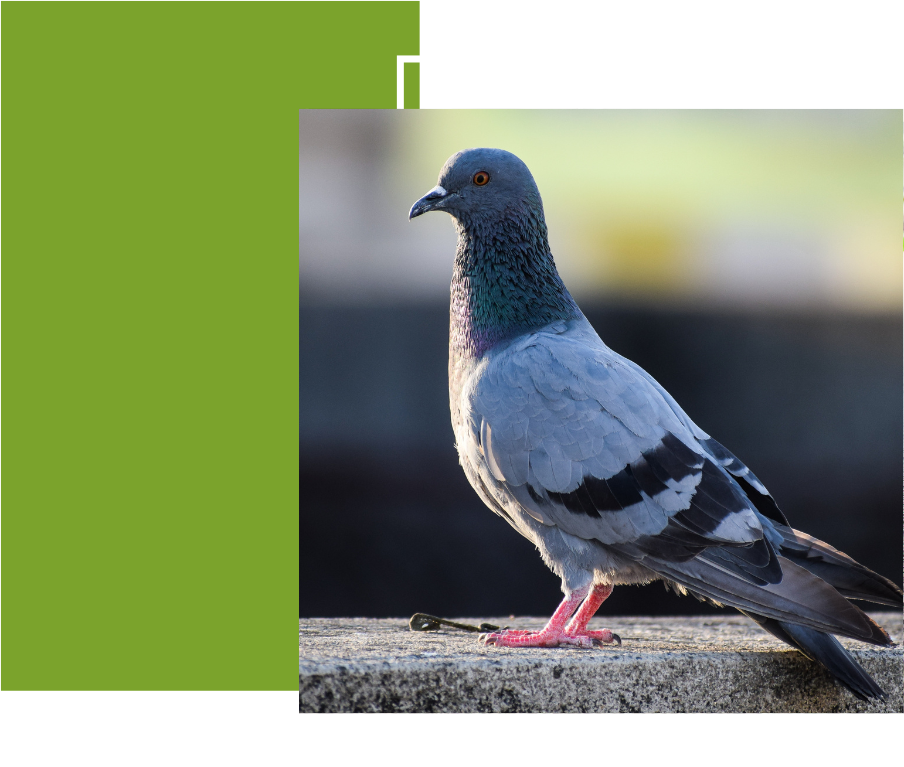Cincinnati is home to a diverse array of bird species, each with its unique behaviors and challenges. Pigeons, known for their adaptability, are prevalent in urban areas and are notorious for their roosting habits. They often gather in large numbers, creating not only a visual blight but also health hazards through their droppings. Similarly, sparrows and starlings, although smaller, can invade homes and businesses, building nests in vents and eaves, leading to structural damage and fire hazards.
Canadian geese, another common sight, are particularly troublesome during their nesting season. These large birds can be aggressive, posing a threat to people and pets. Their droppings are not only unsightly but can also contribute to significant pollution in water bodies. Their impact on the Cincinnati area is profound, leading to a need for effective control and management strategies.
Challenges Of Infestations
The problems caused by these birds are not limited to mere nuisance. They pose real and significant risks. The droppings of pigeons and starlings are not just unsightly; they are corrosive, leading to damage to buildings, vehicles, and outdoor structures. This damage can be costly to repair and may lead to long-term structural issues if not addressed. Moreover, droppings are a health hazard, harboring diseases such as histoplasmosis, cryptococcosis, and psittacosis, which can pose serious health risks to humans.
The impact of infestations is often underestimated. For example, the accumulation of droppings can lead to significant health hazards. These droppings can harbor fungi and bacteria, posing a risk of respiratory infections and other health problems. In areas with high populations, the risk of contamination and disease transmission increases.
The economic impact is also considerable. The cost of cleaning and repairing damage can be substantial for homeowners and businesses. In urban areas, the cumulative cost of bird-related damage and cleanup can reach into the millions, affecting the overall economic health of the community.
Nesting in homes and businesses can cause a variety of issues. Their nests can block ventilation systems, create fire hazards, and attract other pests like mites and beetles. The noise and odor associated with large bird populations can also significantly reduce the quality of life and affect the day-to-day operations of businesses.
The Ineffectiveness Of DIY Bird Control
DIY control methods often prove to be inadequate and sometimes illegal. Different species require specific approaches for control and removal, and without the proper knowledge, these attempts can be futile. For example, using inappropriate deterrents may not only be ineffective but could also harm the birds, leading to potential legal issues, as many species are protected under local and federal laws.
Moreover, birds are intelligent and adaptive creatures. They can quickly learn to overcome simple deterrents, making amateur attempts at control ineffective. In some cases, DIY methods can exacerbate the problem, leading to larger populations or more aggressive behavior.
Our approach to bird control is comprehensive and multifaceted. We start with a thorough inspection to assess the extent of the infestation and identify the species involved. Based on this assessment, we develop a tailored plan that may include habitat modification, exclusion techniques, and the use of deterrents.
Our methods are designed to be humane and environmentally responsible. We focus on long-term solutions, ensuring that once they are removed, they do not return. This may involve sealing entry points, installing physical barriers like spikes or nets, and advising on best practices for maintaining a bird-free environment.
A key part of our service is educating clients on how to maintain a bird-free environment. This includes advice on garbage management, building maintenance, and landscaping changes that can deter birds from returning. By empowering our clients with this knowledge, we ensure that the solutions we provide are lasting and effective. Contact us today to schedule an inspection.
Frequently Asked Bird Questions
Q1: Can Birds Actually Cause Structural Damage to Buildings?
A1. While it might seem surprising, certain species can indeed cause structural damage to buildings. This damage is primarily due to their nesting habits and the acidic nature of their droppings. For example, pigeons, sparrows, and starlings often build nests in gutters, vents, and other crevices, which can lead to blocked drainage systems and water damage. The acidity in droppings can corrode building materials, including metal and stone, leading to costly repairs. Over time, the accumulation of nests and droppings can weaken structures, posing a risk to the integrity of buildings.
Q2. Are There Any Surprising Ways They Can Impact Human Health?
A2. Birds can have a more direct impact on human health than many people realize. Beyond the well-known risks of diseases like histoplasmosis, they can be carriers of ectoparasites such as mites, fleas, and ticks. These parasites can transfer to humans, leading to skin irritations, allergic reactions, and in rare cases, disease transmission. Additionally, the presence of large populations, especially in urban areas, can exacerbate asthma and other respiratory conditions due to the increased presence of bird droppings and feathers in the environment.
Q3. Why Do Some Species Prefer Urban Environments, and How Does This Affect Control Methods?
A3. Several species thrive in urban environments due to the availability of food sources, nesting sites, and the lack of natural predators. Species like pigeons and starlings are attracted to the abundance of food waste in urban areas. They have also adapted to building their nests in man-made structures, which provide safety from predators. This adaptation to urban life affects control methods significantly. Traditional methods used in rural areas, such as habitat modification, may not be as effective in urban settings. Urban control often requires a combination of exclusion techniques, deterrents, and sometimes, population management, all done in a way that is safe for both the birds and the urban environment.

